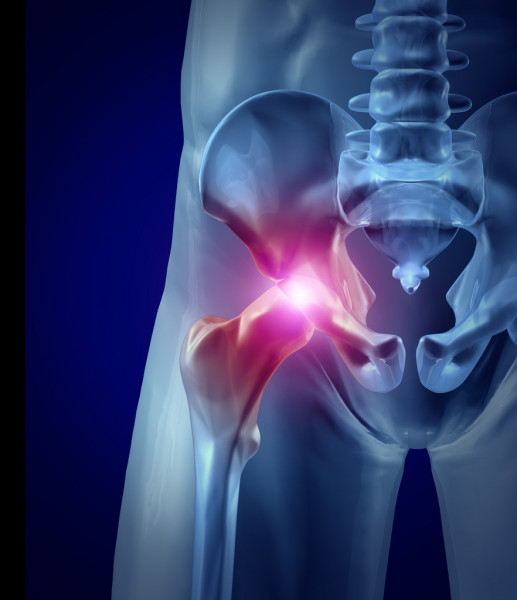Hip Pain: How to determine the cause of your hip pain and how to manage it

The goal of this article is to help give you an idea of a few common hip conditions that arise over time. However, sometimes these conditions can be triggered by an injury. There are several potential causes for pain in the hip and fortunately most are not serious. These include referral from the low back, osteoarthritis, and gluteal tendinopathy. This article will focus on these three conditions, but keep in mind other conditions could be present. If concerned contact your GP or physio for an assessment. Your physio can help develop an activity plan that suits your life, gets you feeling better and addresses any limitations.
Referral from Lower Back
By far the most common cause of pain to the buttocks or side of the hip is due to referral from the lower back (lumbar spine). Referred pain can be due to bulging discs or injury to the joints of the spine which can irritate the nearby nerve. Symptoms of lumbar spine referred pain include hip pain with low back pain, pain travelling down your leg in a tight band, pins and needles and numbness. The best thing you can do to manage low back pain is to keep moving and be generally healthy. Nerves respond well to movement and general health (e.g. healthy diet, good sleep, exercise and not smoking) and discs can spontaneously resorb with time! However, if pins and needles or numbness are present especially if they travel down both legs or get worse with time, seek a medical opinion.
Osteoarthritis (OA)
OA is the most common cause of hip pain in the population of older adults, usually over 65 years of age. Common signs of OA are morning stiffness for more than 30 minutes that eases with movement, pain in the groin or buttocks, difficulty putting on shoes, night pain may be present in advanced OA, and pain normally responds to ibuprofen. Range of motion in the hip and strength can also be affected. The good news is that OA responds very well to improving general health (e.g. weight loss, good sleep, no smoking), exercise, and resistance training. Exercise reduces the amount of inflammatory chemicals released and getting the muscles strong reduces load on the joint. While physio can’t change what happened to the bone in the joint, bone doesn’t need to change for you to get out of pain and improve your function. Likely with time you will be able to get your hip to a place where you don’t have any symptoms of OA if you take steps to manage as discussed.
Gluteal tendinopathy (otherwise known as hip tendonitis)
A rarer cause of hip pain but also easier to diagnose. Gluteal tendinopathy presents a bit more straight forward than the other two conditions. The symptoms include pain on the outside bony point of the hip, difficulty standing on one leg, pain walking up stairs and inclines or pain on side lying. The typical person that is affected is females around the age of 40 who have just had a large increase in activity levels. It can also be seen in athletes, usually associated with an increase in training load, and only occasionally in men. Quite often tendinopathy co-exists with a hip bursitis. Strengthening of the muscles around the hip is the most effective way to manage any tendinopathy. Also, preventing the leg from crossing the body can help avoid aggravating the condition.
When is hip pain a concern?
If you have other health concerns such as unexplained weight loss, writhing night pain, difficulty urinating (incontinence), or numbness (to the groin region especially), pins and needles or weakness; please visit your GP or A&E as these may be signs of more serious pathologies. If you have these symptoms no need to panic though, they are just worth further investigation!
– by Nick Dias, Physiotherapist, Growing Younger Physiotherapy Group
If you’d like a FREE professional’s opinion on your hip pain contact us on 09-5328942 to get a FREE hip physiotherapy examination in Howick, Auckland
